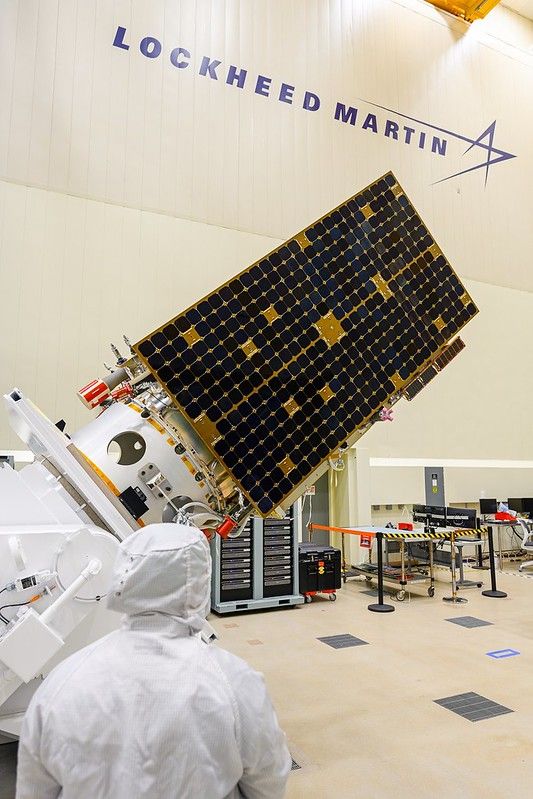Lockheed Martin’s LM 400 satellite has passed its electromagnetic compatibility testing and is on course to pass thermal vacuum testing.
The LM 400 is a mid-sized satellite that can be modified for military, civil or commercial uses. The satellite has been designed for versatility and can host a variety of payloads with limited or no changes in low, medium and geosynchronous earth orbits.
Electromagnetic Compatibility (EMC) testing is carried out to ensure that signals from the satellite bus components will not interfere with critical payloads during operations. The LM 400 is also progressing through thermal vacuum (TVAC) testing, Lockheed Martin Said. TVAC testing recreates as closely as possible the extremes of pressure and temperature of space on Earth.
The first LM 400, which was completed in December is expected to launch later this year for a demonstration mission.

Malik Musawwir, Lockheed Martin Space’s satellite center of excellence vice president said, “This successful testing of LM 400 helps prove the satellite’s design integrity and operational capabilities. This is a significant accomplishment for this new satellite and the space vehicles that will leverage this platform from our advanced digital LM 400 production line.”
The LM 400 spacecraft can be used for remote sensing, communications, imaging, radar and persistent surveillance applications. It has a scalable and versatile design that provides flexibility and the necessary power to quickly meet a wide range of customer needs. Pre-defined trim packages are available to meet specific mission needs.
The spacecraft also features joint all-domain operations and joint all-domain command and control with a Modular Open Systems Architecture, greater mission adaptability and onboard “Edge” data processing with Lockheed Martin’s SmartSat software-defined satellite architecture.
According to Lockheed Martin it can achieve a high enough rate of production with the LM 400 to meet large constellation needs, with cost and schedule efficiency enabled by supply chain agreements and automation throughout the product lifecycle, from inventory management to manufacturing and test.
“The LM 400’s digital design allows for multiple versions to be seamlessly produced – including a flat satellite that will support rapid launching of up to six stackable space vehicles at a time,” added Musawwir. “These types of 21st century security agile deterrence capabilities will provide our customers with maximum flexibility for their missions.”
The LM 400 is already under several contracts, most recently being named as a satellite bus supporting the US Space Force’s planned Missile Track Custody program in medium earth orbit.
When launched, the LM 400 will feature a Lockheed Martin-produced Electronically Steered Array.





